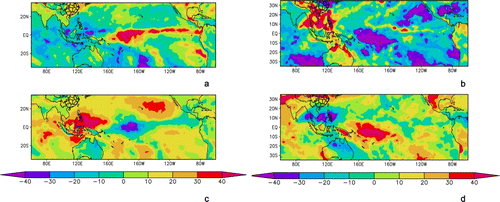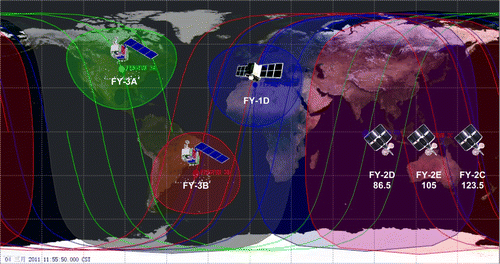Figures & data
Table 1. List of launched Chinese meteorological satellites.
Table 2. Major technical specifications of the FY-3 platform.
Table 3. Specifications of the 11 payloads.
Figure 2. Standard deviations of bias-corrected first-guess departures for FY-3A and MetOp-A/AQUA equivalent instruments and channels (Courtesy of Lu Qifeng, NSMC). Statistics are derived from data used in the period from 28 August to 28 September, 2008: (a) MWTS and AMSU-A, (b) MWHS and MHS, (c) IRAS and HIRS, and (d) MWRI and AMSR-E.

Figure 3. Global total column ozone distribution monitored by TOU/FY-3A (a), GOME 2/Metop (b), and OMI/Aura (c) (Courtesy of Wang Weihe, NSMC).

Figure 4. Global radiative anomalies in shortwave and longwave derived from ERM/FY-3 in an El Niño year (2010) and La Niña year (2011). (a) Shortwave radiative anomalies in an El Niño year (2010), (b) shortwave radiative anomalies in an La Niña year (2011), (c) longwave radiative anomalies in an El Niño year (2010), and (d) longwave radiative anomalies in a La Niña year (2011) (Courtesy of Zhang Yan and Qiu Hong, NSMC).

